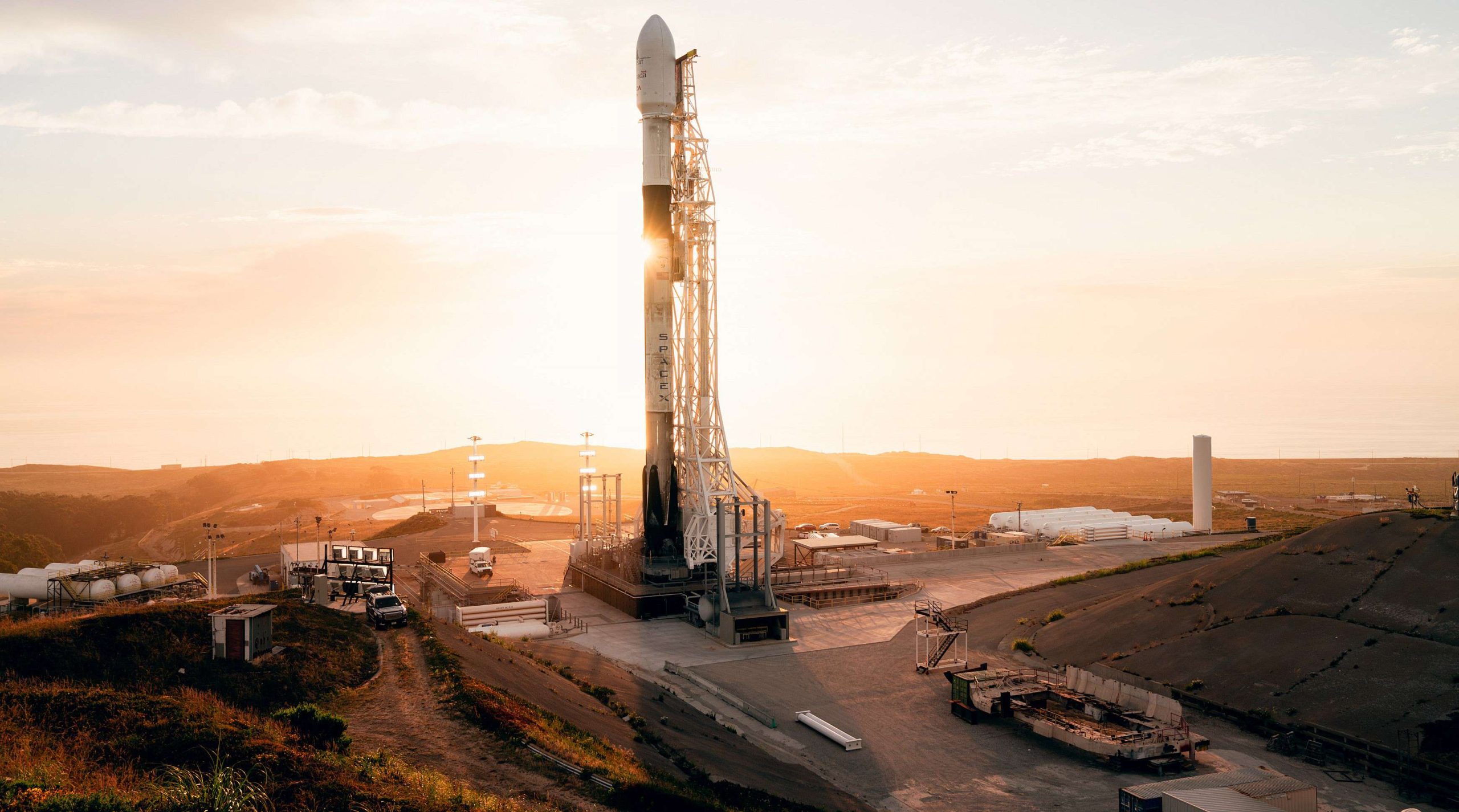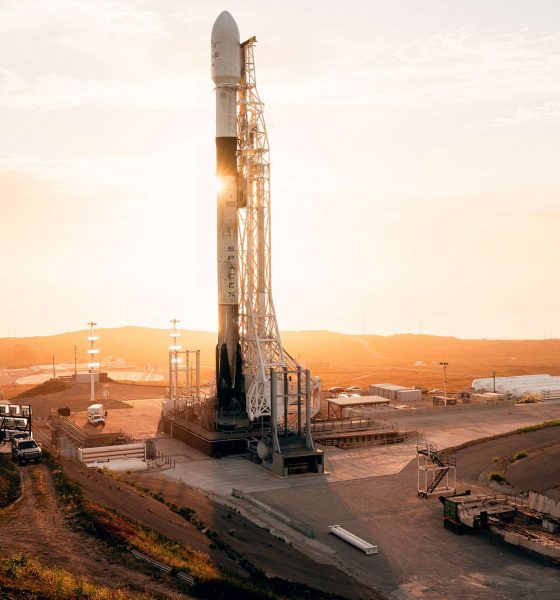

News
SpaceX awarded double-satellite Falcon 9 launch contract, sixth win of 2019
SpaceX continues to reap the benefits of strong market demand for Falcon 9’s combination of affordability and performance with an announcement that the company has won its sixth launch contract in 2019.
Announced on July 3rd by Space Norway and several other stakeholders, a SpaceX Falcon 9 is scheduled to launch an identical pair of communications satellites to an unusual orbit no earlier than late 2022. Northrop Grumman will build both ~2000-kilogram (4400 lb) spacecraft.
Known officially as the Arctic Satellite Broadband Mission (ASBM), Space Norway has partnered with satellite operator Inmarsat and the Norwegian Ministry of Defense to provide connectivity to civilian and military users in and around the Arctic. Additionally, the US Air Force will have its own communications payloads on both satellites, rounding out the extremely busy mission.
The two ASBM satellites will be built around the GEOStar-3 bus, originally introduced by Orbital Sciences Corporation (acquired by Alliant Techsystems to become Orbital ATK, then acquired by Northrop Grumman to become Northrop Grumman Innovation Systems). Each satellite will produce 6 kW via solar arrays, while the GEOStar-3 bus can support all-chemical propulsion, all-electric propulsion, or a hybrid approach. Falcon 9’s 2022 launch of ASBM will mark the first time that GEOSat-3 satellites have utilized their stacking capability, with both spacecraft heading to orbit on the same rocket.

Perhaps the most unique aspect of the ASBM mission is the extremely unusual orbit Falcon 9 will be launching them to. According to info published by Space Norway on June 24th, they will be targeting a final orbit roughly comparable to the Molniya orbits originally used by Soviet Union military communications satellites as early as the mid-1960s. ASBM’s orbits will also be highly elliptical and approximately polar, with an apogee of 43,000 km (26,700 mi) and a perigee of 8000 km (5000 mi). Traditionally, Molniya orbits had much lower perigees, but the higher perigee of ASBM satellites should allow them to operate indefinitely without having to worry about atmospheric drag lowering their orbits.
The ASBM satellites will reach their perigee somewhere over Antarctica and will generally power down their communications hardware until they are back over the Arctic. By having two satellites, the other satellite will be able to guarantee continuous coverage while its twin is out of contact.

With an overall payload weight around 4000 kg (8800 lb), it’s likely that Falcon 9 has the performance necessary to place the spacecraft in a transfer orbit (likely ~300 km by 43,000 km) and safely land on a SpaceX drone ship, in which case the satellites would raise their perigees themselves. It’s unlikely that a recoverable Falcon 9 launch has enough performance to send the satellites directly to their final orbits, although an expendable mission might be able to do it.
Regardless, this launch contract is yet another sign that SpaceX will continue to have strong demand for Falcon 9 launch services in the coming years. ASBM is the sixth win for SpaceX just in the last four or so months, beginning in February with three US military contracts, followed by a NASA contract in April and a Korean mission in June.
Check out Teslarati’s Marketplace! We offer Tesla accessories, including for the Tesla Cybertruck and Tesla Model 3.

Elon Musk
Elon Musk confirms xAI’s purchase of five 380 MW natural gas turbines
The deal, which was confirmed by Musk on X, highlights xAI’s effort to aggressively scale its operations.

xAI, Elon Musk’s artificial intelligence startup, has purchased five additional 380 MW natural gas turbines from South Korea’s Doosan Enerbility to power its growing supercomputer clusters.
The deal, which was confirmed by Musk on X, highlights xAI’s effort to aggressively scale its operations.
xAI’s turbine deal details
News of xAI’s new turbines was shared on social media platform X, with user @SemiAnalysis_ stating that the turbines were produced by South Korea’s Doosan Enerbility. As noted in an Asian Business Daily report, Doosan Enerbility announced last October that it signed a contract to supply two 380 MW gas turbines for a major U.S. tech company. Doosan later noted in December that it secured an order for three more 380 MW gas turbines.
As per the X user, the gas turbines would power an additional 600,000+ GB200 NVL72 equivalent size cluster. This should make xAI’s facilities among the largest in the world. In a reply, Elon Musk confirmed that xAI did purchase the turbines. “True,” Musk wrote in a post on X.
xAI’s ambitions
Recent reports have indicated that xAI closed an upsized $20 billion Series E funding round, exceeding the initial $15 billion target to fuel rapid infrastructure scaling and AI product development. The funding, as per the AI startup, “will accelerate our world-leading infrastructure buildout, enable the rapid development and deployment of transformative AI products.”
The company also teased the rollout of its upcoming frontier AI model. “Looking ahead, Grok 5 is currently in training, and we are focused on launching innovative new consumer and enterprise products that harness the power of Grok, Colossus, and 𝕏 to transform how we live, work, and play,” xAI wrote in a post on its website.
Elon Musk
Elon Musk’s xAI closes upsized $20B Series E funding round
xAI announced the investment round in a post on its official website.

xAI has closed an upsized $20 billion Series E funding round, exceeding the initial $15 billion target to fuel rapid infrastructure scaling and AI product development.
xAI announced the investment round in a post on its official website.
A $20 billion Series E round
As noted by the artificial intelligence startup in its post, the Series E funding round attracted a diverse group of investors, including Valor Equity Partners, Stepstone Group, Fidelity Management & Research Company, Qatar Investment Authority, MGX, and Baron Capital Group, among others.
Strategic partners NVIDIA and Cisco Investments also continued support for building the world’s largest GPU clusters.
As xAI stated, “This financing will accelerate our world-leading infrastructure buildout, enable the rapid development and deployment of transformative AI products reaching billions of users, and fuel groundbreaking research advancing xAI’s core mission: Understanding the Universe.”
xAI’s core mission
Th Series E funding builds on xAI’s previous rounds, powering Grok advancements and massive compute expansions like the Memphis supercluster. The upsized demand reflects growing recognition of xAI’s potential in frontier AI.
xAI also highlighted several of its breakthroughs in 2025, from the buildout of Colossus I and II, which ended with over 1 million H100 GPU equivalents, and the rollout of the Grok 4 Series, Grok Voice, and Grok Imagine, among others. The company also confirmed that work is already underway to train the flagship large language model’s next iteration, Grok 5.
“Looking ahead, Grok 5 is currently in training, and we are focused on launching innovative new consumer and enterprise products that harness the power of Grok, Colossus, and 𝕏 to transform how we live, work, and play,” xAI wrote.
Investor's Corner
Tesla gets price target bump, citing growing lead in self-driving

Tesla (NASDAQ: TSLA) stock received a price target update from Pierre Ferragu of Wall Street firm New Street Research, citing the company’s growing lead in self-driving and autonomy.
On Tuesday, Ferragu bumped his price target from $520 to $600, stating that the consensus from the Consumer Electronics Show in Las Vegas was that Tesla’s lead in autonomy has been sustained, is growing, and sits at a multiple-year lead over its competitors.
CES 2026 validates Tesla’s FSD strategy, but there’s a big lag for rivals: analyst
“The signal from Vegas is loud and clear,” the analyst writes. “The industry isn’t catching up to Tesla; it is actively validating Tesla’s strategy…just with a 12-year lag.”
The note shows that the company’s prowess in vehicle autonomy is being solidified by lagging competitors that claim to have the best method. The only problem is that Tesla’s Vision-based approach, which it adopted back in 2022 with the Model 3 and Model Y initially, has been proven to be more effective than competitors’ approach, which utilizes other technology, such as LiDAR and sensors.
Currently, Tesla shares are sitting at around $433, as the company’s stock price closed at $432.96 on Tuesday afternoon.
Ferragu’s consensus on Tesla shares echoes that of other Wall Street analysts who are bullish on the company’s stock and position within the AI, autonomy, and robotics sector.
Dan Ives of Wedbush wrote in a note in mid-December that he anticipates Tesla having a massive 2026, and could reach a $3 trillion valuation this year, especially with the “AI chapter” taking hold of the narrative at the company.
Ives also said that the big step in the right direction for Tesla will be initiating production of the Cybercab, as well as expanding on the Robotaxi program through the next 12 months:
“…as full-scale volume production begins with the autonomous and robotics roadmap…The company has started to test the all-important Cybercab in Austin over the past few weeks, which is an incremental step towards launching in 2026 with important volume production of Cybercabs starting in April/May, which remains the golden goose in unlocking TSLA’s AI valuation.”
Tesla analyst breaks down delivery report: ‘A step in the right direction’
Tesla has transitioned from an automaker to a full-fledged AI company, and its Robotaxi and Cybercab programs, fueled by the Full Self-Driving suite, are leading the charge moving forward. In 2026, there are major goals the company has outlined. The first is removing Safety Drivers from vehicles in Austin, Texas, one of the areas where it operates a ride-hailing service within the U.S.
Ultimately, Tesla will aim to launch a Level 5 autonomy suite to the public in the coming years.








